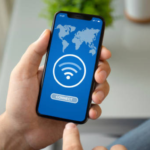What is the Lice Conundrum?
Lice infestations present a perplexing challenge, delving into the Quantity Quandary—examining the quantity, beliefs, and fears surrounding these tiny parasites. This guide aims to unravel the complexities, shedding light on government health programs, common fears, and cognitive factors influencing perceptions.
Objectives of the Article
The objective is to provide a comprehensive understanding of the quantity quandary related to lice infestations. By exploring government health initiatives, public attitudes, and cognitive factors contributing to fear, this guide aims to equip readers with insights to address and demystify the lice conundrum.

Government Health Workers
Government health workers play a pivotal role in managing lice-related concerns. This section explores their responsibilities, challenges, and the impact of large-scale health promotion programs on lice prevention.
Attitudes to Government Health
Understanding public attitudes towards government health initiatives is crucial. We delve into the factors shaping these attitudes and how they influence the effectiveness of lice prevention programs.
Distinction between Health Care Workers and Health Promoters
A clear distinction exists between health care workers and health promoters. This segment clarifies their respective roles and contributions to tackling lice infestations on a larger scale.
The Role of Centers for Disease Control in Government Health Programs
The Centers for Disease Control (CDC) play a vital role in shaping and implementing government health programs. This section examines the CDC’s involvement and its impact on lice prevention strategies.
Fear of Lice Infestation
Unraveling the psychological aspect, we delve into the fear associated with lice infestations. By identifying common fears and their roots, we aim to demystify lice-related anxieties.
Common Fears Related to Lice Infestation
Exploring prevalent fears, such as social stigma and the perceived difficulty of lice eradication, sheds light on the emotional aspects of the lice conundrum.
How Beliefs about Disease May Influence Fear of Lice Infestations
This section examines the interplay between cultural beliefs about diseases and the fear associated with lice infestations, providing insights into effective communication strategies.
Cognitive Factors that Lead to Elevated Fear Levels
Understanding cognitive factors influencing fear levels is essential. We explore cognitive biases and perceptions that contribute to heightened fears surrounding lice infestations.

Benign Diseases vs. Life-Threatening Diseases
Drawing a clear distinction between benign and life-threatening diseases helps contextualize the lice conundrum. We explore how this understanding impacts public perception and response.
Understanding the Difference between Benign and Life-Threatening Diseases
This segment elaborates on the characteristics that differentiate benign diseases, like lice infestations, from more severe health threats, fostering a balanced perspective.
Exploring Different Concepts of Disease Causation
Diverse cultural and medical perspectives on disease causation contribute to the lice conundrum. We analyze these concepts to enhance cross-cultural understanding and effective communication.
Country Comparisons and Studies on Hygiene-Related Diseases
Comparing countries allows us to explore variations in hygiene-related diseases and the corresponding government health promotion programs. Case studies provide valuable insights into successful strategies.
Comparing Country Governments on Large-Scale Health Promotion Programmers
By comparing the approaches of different governments to large-scale health promotion programs, we gain a comprehensive view of how countries address the lice conundrum on a national scale.
This guide aims to unravel the intricate layers of the quantity quandary surrounding lice infestations, offering a nuanced understanding and empowering readers to contribute to effective solutions.

Conclusion: Navigating a Lice-Free Future
In conclusion, this guide has thoroughly examined the issue of lice infestations, specifically addressing the challenges related to their quantity. From the pivotal role of government health workers to the psychological nuances of lice-related fears, each aspect has been unveiled for a comprehensive understanding. As we contemplate the interplay of cultural beliefs, cognitive factors, and global health initiatives, it becomes evident that addressing the lice conundrum necessitates a holistic approach. The guide serves as a beacon, guiding communities towards lice-free futures through increased awareness, dispelling misconceptions, and fostering cross-cultural understanding. It stands as a testament to the collective effort required to navigate the quantity quandary, empowering individuals to contribute to a world where the lice conundrum is not only understood but triumphed over.
(FAQs) on Lice Infestations
A1: Common signs include itching, visible nits (lice eggs) on hair strands, and red bumps or sores on the scalp.
A2: Lice move, while dandruff flakes are stationary. A careful examination and identification of nits help distinguish lice from other conditions.
A3: Fine-toothed combs, wet combing, and natural remedies like tea tree oil or mayonnaise are effective methods. Consistency and thoroughness are key.
A4: Yes, many over-the-counter products are effective. It’s crucial to follow the instructions carefully and be aware of potential allergic reactions.
A5: Consider professional help for severe infestations or if home treatments prove ineffective. Professional lice removers ensure thorough removal.
A6: Practice good personal hygiene, avoid sharing personal items, and conduct regular checks for early detection. Clean bedding and living spaces regularly.
A7: No, lice are equal opportunists and can infest both clean and dirty hair. Personal hygiene is just one factor influencing infestations.
A8: Yes, lice can spread in communal settings. Implementing educational programs and swift action in the event of an outbreak are preventive measures.
A9: Yes, essential oils like tea tree oil, vinegar, and mayonnaise are known to be effective. However, their success may vary, and consistency is crucial.
A10: Common myths include the belief that lice only infest dirty hair or that they can jump from head to head. Understanding these myths is essential for effective prevention and removal strategies.



GIPHY App Key not set. Please check settings
One Comment